- Home
- Isaac Hooke
Alien War Trilogy 3: Titan Page 4
Alien War Trilogy 3: Titan Read online
Page 4
five
We have to find a landmark of some kind to reorient ourselves,” Rade said. “According to the map, there should be a north-south trending mountain range somewhere to the west. If we can hit that, all we have to do is follow it to the north. When we reach the last mountain, the drop site should be roughly forty kilometers to the east.”
“You’re assuming that we hit the correct mountain range when we go west,” Fret said. “We could be hopelessly off course. On the wrong hemisphere, even. There might be mountains. There might not.”
“Well if there are mountains,” Tahoe said. “Now that the weather has cleared up some, we can use our local-beam LIDAR to map out the shoulder of the ridge as we advance. All we have to do is line it up with the topographical data on our maps, and voilà, we’ll know where we are.”
“Sure, if the current conditions hold, then we can,” Fret agreed. “But if the snowstorm returns...”
“Positivity, Fret,” Rade said. “I’d like to see some from you, for once.”
“We all know that positivity is—”
“Yes yes,” Rade interrupted. “The bane of all warriors. Negativity keeps us alert and all that. Well just this once, let’s forgo that. Let’s be positive.”
“All right boss,” Fret said. “All right.”
And so the party headed west.
The landscape proved little different as they headed on the new bearing. In fact, the only way Rade could tell that they were trudging in the proper direction was because of the positional updates displayed on his HUD, courtesy of the built-in accelerometers and gyroscopes of the mechs. Their orientation could have been all wrong of course, but the AI assured him, after extensive analysis of the rays of sun that penetrated the cloud cover, that they were in fact marching in the proper direction.
Rade was trudging ten meters behind Manic’s Titan near the center of the single-file formation, when the incident occurred.
He was tracking the plains from left to right, scanning for enemies as he often did while plowing through those drifts of everlasting white. Since the winds had died down, he had dialed up his external microphone, and that allowed him to hear the sharp crack that suddenly erupted from ahead.
“What—” He brought his gaze forward.
Manic had frozen. Ten meters in front of him, where Lui had been, remained only the snowdrift. Another ten meters beyond him, Tahoe, on point, had stopped and turned around.
“Lui?” Rade said.
“He just vanished!” Manic rushed forward.
“Manic, wait!” Rade said.
Manic halted.
“Don’t move,” Rade said. “Cyclone, you too.”
“I don’t plan to,” Tahoe said. He had swiveled both weapons into the hands of his Titan, and he was scanning the drift immediately surrounding him, searching for whatever it was that had hauled Lui underneath.
Rade glanced at his overhead map. According to the data on the HUD, Lui was still there, and his ping times were updating.
“Lui, do you read?” Rade said. “Lui?”
“I—” came Lui’s frantic response. “I can’t get a grip.”
“Manic,” Rade said. “Zoom in on his previous position.”
Rade switched his viewpoint to Manic’s camera feed. There was a mech-sized depression in the drift where Lui had vanished, but from the current angle, he couldn’t see the bottom of it.
“Edge forward,” Rade instructed Manic. “Very slowly.”
The snow immediately surrounding the depression began to fall inward, as if plunging into a buried crevice.
Then he realized what was happening.
“Jerry, open up!” Rade said. The cockpit fell open and Rade jetted outside.
“Rage!” Manic said.
Rade landed in the deep snow beside the depression, and sunk to his shoulders. The snow was loose, since he was near the edge of the depression, and he plowed his body through it with relative ease. Below him was Lui in his jumpsuit, hanging onto the edge of the depression. The soldier was submersed in yellow-white liquid.
Rade offered him a hand and pulled him from the liquid. Lui collapsed on the intact drift beside it, his body sinking deep into the snow.
“We’re on some kind of lake, people,” Rade said.
“It’s a liquid methane composite.” Lui shook his head behind his faceplate. “I can’t believe I lost Arachnid.” That was the callsign of his mech. “It just sunk. That composite has no buoyancy properties whatsoever. I couldn’t fire my jumpjets. They were clogged with the stuff. I ejected, and my jumpsuit’s jetpack wouldn’t work either. Luckily I emerged near the edge of the broken ice, but I had trouble finding purchase. Thanks for grabbing me, boss.”
“Anytime,” Rade told him.
“I think I know what happened,” Tahoe said.
“We all know,” Bender said. “We’re walking on thin ice. And we’re too damn heavy.”
“That’s only part of the story,” Tahoe said. “Use the sensors padding the feet of your Titan. See that liquid methane underneath, between the metal and the ice? I think the ice would have held under ordinary conditions. But the massive pressure induced by the feet of our Titans, the focal point of our entire weight, caused the surface layer to melt underneath. The cumulative melting effect of several passing mechs weakened the surface. We probably shouldn’t be walking in single file over this lake, nor in each other’s footsteps...”
Lui abruptly leaped up, evidently startled.
“What is it?” Rade said, standing as well.
“The opening.”
Rade glanced at the liquid. A white, glistening human hand was reaching up.
Rade wrapped his arms around Lui and jetted into the air.
The hand continued to reach higher below him.
“Start retreating, people,” Rade said. “Tahoe, give that hole a wide berth. We don’t need you plunging through the ice, too. Everyone, keep your fingers on your jumpjet triggers. And avoid stepping in the footprints we created on the way here.”
Rade landed on his Titan, secured Lui to the passenger seat, then loaded into the cockpit.
“What about that hand?” Manic said.
When the external camera feed kicked in, Rade glanced at the hole in the ice.
The hand definitely wasn’t human. The arm it was connected to was far too long—the thin, glistening white appendage now reached two meters above the surface.
“Forget the hand, we retreat,” Rade said.
The drifts closest to the hole began to vanish in an outward pattern as more of the ice collapsed.
“Faster, people,” Rade said. “Jump jump jump!” He activated his jumpjets and landed thirty meters farther from the hole. He confirmed that Tahoe was behind him and then advanced as fast as he was able; like everyone else, he avoided the earlier footprints and trekked over fresh snow, which made it difficult to travel with any speed.
Up ahead Grappler tripped and fell, and for a moment Rade worried the ice—or the creature—had taken him, but then his mech emerged from the drift and was quickly on the move again.
He heard several loud cracks. Looking back, Rade saw that three pairs of those long appendages had emerged; the drifts around them had fallen away, revealing more of the methane lake. A large, amorphous mass momentarily surfaced: the source of the appendages. A wide, insectile maw opened at the base, just above the liquid.
“Cyclone, let’s tell this thing that we’re not interested in being friends,” Rade said.
Rade and Tahoe let off a few Hellfires.
The detonations tore off several limbs and ripped away part of the maw. The beast squealed loudly.
“Fuck you too,” Tahoe told it.
The creature vanished under the ice.
“Shouldn’t the explosions have ignited the methane?” Manic said.
“We’ve seen similar reactivity before,” Tahoe said. “Or rather, the lack thereof. When we unleashed our incendiaries at the snow for example. For whatever
reason, the chemical combustion point is different.”
“It’s not pure liquid methane,” Lui said from the passenger seat. “There are other chemical bonds involved. I told you it’s a composite.”
“That’s right,” Tahoe said. “There you go.”
The Titans continued their hurried retreat. Rade scanned the snowy surface around him, watching for signs of the creature. He kept one finger on the jumpjet trigger, another on the cobra.
“Think it’s gone for good?” Manic said.
Just as he said those words, up ahead the ice literally erupted from the lake. A massive body thrust skyward like a sperm whale surfacing. Rade got a better picture of the thing: the best description was a mixture of a whale and a caterpillar. The long white limbs ran down the glistening black skin on the lower flanks; at the head region, two mandibles crunched at the air underneath large, twin insectile eyes. Liquid methane squirted from a blowhole on the dorsal surface. There seemed to be gills, too, judging from the fleshy plates located on either side of the head.
The giant creature reached the apex of its upward thrust, hovered there like an office tower for a few moments while its momentum reversed, and then began its descent. That massive form loomed directly above the party, its angle of descent aligned with the positions of their mechs on the ice so that if they remained in place they would be crushed into the lake.
“Jumpjets,” Rade said calmly. “Go around it to the left. And let it feel our sting.”
Rade and the others jetted around the plunging form. They unleashed their cobras and zodiacs, and the creature squirmed underneath them, roaring.
The thing slammed into the ice, breaking away more of the lake’s surface. It vanished underneath the liquid methane and did not return.
Rade and the others landed.
Grappler continued on point, and the rest followed, slightly offset to the left and right so that no one stepped in the footprints of anyone else.
“I think we’re off the lake,” Grappler announced a few moments later.
“How do you know?” Fret said.
“Check your foot sensors,” Grappler replied. “There’s tundra under this snow.”
Rade confirmed it, and then cross-checked his location on the map.
“Jerry, can you update our position on the map, so that it corresponds to a lake east of the mountain range?”
“I can,” the AI replied. “But which lake would you like me to use?”
Rade glanced at his overhead map. Unfortunately, there were at least a hundred lakes of similar size east of the mountain range.
“Ah, never mind,” Rade said. “Grappler, let me know the moment you detect more ice. We’ll see if we can’t correlate our position. Now, the question remains, what are we going to do about Lui? Though the radiation isn’t too bad out here, closer to the drop site, and the city, it gets fairly intense. We’re—”
Abruptly a Titan burst from the liquid methane hole carved by the massive creature. Lui’s mech, Arachnid. It jetted skyward like a geyser, as if it had been spat out by something, and arced over the frozen lake. As it came down, it fired its air brakes and aerospike thrusters and landed in a cloud of snow.
“Apparently I didn’t agree with its palate,” Arachnid said.
“Hell ya!” Lui jetted forward and loaded back into his Titan.
Rade glanced at Tahoe. His Titan shrugged.
“Providence,” Tahoe said.
They switched to a single file march once more and resumed their previous pace.
Half an hour later Grappler announced that he had found more ice.
“Jerry, compute the distance between our current location, and the lake we left behind, and see if you can line it up with lakes separated by a similar distance on the map.”
“No correlations found,” Jerry said a moment later.
“It must be a tiny body of water,” Rade said. “Or part of the same lake. Grappler, find the edges. Lead us around.”
Grappler turned inward after only a few meters. It was definitely tiny. Far too small for the resolution of the orbital scans that had constructed their maps.
In two hours they found another frozen lake. The AI was finally able to calculate their positions based on the two bodies of water and the planetary topography data.
“Are there any other lakes separated by a similar distance?” Rade asked the AI.
“No,” Jerry replied. “I believe our coordinates are accurate.”
“My AI says our coordinates are accurate,” Rade announced.
“We’ll see,” Bender replied. “Once we actually reach the mountain range.”
The party diverted around the latest lake. The edges detected by the point man corresponded with the boundaries of the lake as depicted by the overhead map.
A good sign.
Four hours later, when the mountains appeared, the location of the range matched up precisely with the map. Rade had the squad run a few local-beam LIDAR scans, and they shortly confirmed that the topography was a match.
“All right, people,” Rade said. “There we go. We finally have our bearings again.”
They proceeded north toward the drop site on autopilot. The party rationed their meal replacements and water; the former would run out in three days, the latter six—roughly the same time as their oxygen supply. Rade authorized a much-needed four hour sleep during the advance, with two watches. Fret took the first watch, Manic the second.
Six hours later—roughly two hours from the site—a fresh snowfall began once more, and the winds picked up. In the span of minutes, the calm and visibility were replaced by fierce gusts and near white-out conditions.
“Weather turns fast on this planet,” Lui commented.
Rade dialed down his external microphone and settled in for a long, tedious march.
Bender, currently on point, abruptly paused.
“What is it, Bender?” Rade sent.
“Thought I saw something.”
Rade switched to Bender’s viewpoint. Visibility was down to thirty meters by then. He stared at the snow in the distance but discerned nothing. He piped in Bender’s thermal camera feed instead. Still nothing.
The legs of Rade’s Titan transmitted a slight vibration to his ankles.
“Detecting slight seismic activity,” Tahoe said.
“Seismic?” Rade asked.
“Yes. Something is approaching.”
“Has to be pretty big, to shake the ground from that far way,” Rade said.
And then he spotted an object in the distance. It wasn’t big, not yet. It winked in and out of view with the ebb and flow of the blizzard.
Wait... there was not just one object out there. But two.
Now three.
Several.
Their shapes were indistinct on the thermal band.
But one thing was certain:
They were getting closer. Fast.
six
Are we receiving a signal from them, Fret?” Rade said.
“No,” the communicator replied.
“Should I open fire?” Bender said.
“Not yet,” Rade told him. “I want visual confirmation that these aren’t UC.”
“If they were UC, we would have a signal by now.”
“Would we?” Rade said. “I’m not so sure about that.”
He switched back to the visual spectrum of Bender’s feed and waited. The snow swirled, blocking any view of the incoming objects. A gust momentarily lifted the white veil and Rade saw them.
His immediate impression was that of a group of Yeti—large creatures covered in white fur, resembling a cross between humans and bears.
The snow descended a moment later and they were gone.
“Form a battle line, people,” Rade said. “Three meter separations. And open fire.”
He switched to his local viewpoint, took a place near the center of the line, and activated the targeting scope on his laser. He tagged an incoming tango on the thermal band and unleashed th
e cobra. The target went down. He launched his electrolaser next. The electrical bolt boomed forth and felled another creature.
As the beasts got closer, with those at the forefront emerging from the blizzard, Rade switched to the visual band for a better look. He realized they were similar to wildebeests or antelopes more than anything else. Very shaggy wildebeests. Almost like mountain goats with all that white fur. Very big ones, at that, roughly the same height as the Titans, their massive legs readily wading through the deep drifts as they half ran, half hopped. The ground shook violently with their approach.
The platoon members continued to fire as the beasts came in. Keelhaul’s Titan was knocked over by one of them; it continued right on past him. Others purposely avoided the mechs, and hurried in-between the Titan ranks.
“I don’t think they’re actually aggressive,” Lui said.
“Lui’s right,” Tahoe said. “They don’t seem to care about us at all. If they hit us, it’s an accident.”
Rade stopped firing and watched as the herd tore past on all sides. The individual animals diverged to pass him on either side, like water from a fast-running stream separating around a rock.
“They’re running,” Fret said.
“From what?” Rade asked.
The tail end of the herd appeared, and in moments the remaining beasts had dashed past. A short interval of quietude followed.
Rade had the answer to his question when different creatures emerged from the blizzard.
Twice as tall as the Titans, they appeared to be very big, and very furry... things. They stood on two muscular feet that easily plowed through the snow. Their upper bodies were hunched forward, and from the upper chests jutted two smaller, human-sized grasping arms. Thin, pentagonal plates formed a long line down their backs from head to tail. A bony frill protruded above the necks. The massive heads were each the size of a human body, and from them two large tusks arced upward. Smaller horns grew from the beaked snouts. Several of those snouts were smeared black, the hair about them matted: perhaps the blood of recently downed prey.
“Hornheads,” Manic christened them.
The leading beasts roared when they saw the platoon members, and they homed in on various Titans in the line.

 Warden 2
Warden 2 Devastator
Devastator Warden 4
Warden 4 Emperor
Emperor Mech
Mech Conqueror
Conqueror Fighter
Fighter The Forever Gate Ultimate Edition
The Forever Gate Ultimate Edition Defiler
Defiler Mech 2
Mech 2 Warden 3
Warden 3 Warden 1
Warden 1 Mech 3
Mech 3 Forerunner
Forerunner The Alliance (AI Empire Book 2)
The Alliance (AI Empire Book 2) Breaker (Monster Tamer Book 1)
Breaker (Monster Tamer Book 1) Bender of Worlds
Bender of Worlds The Pendulum Swings (The Forever Gate Book 8)
The Pendulum Swings (The Forever Gate Book 8) The Link
The Link Just Another Day
Just Another Day Star Warrior
Star Warrior Alien War Trilogy 1: Hoplite
Alien War Trilogy 1: Hoplite Battle Harem 3
Battle Harem 3 The Ethan Galaal Series: Books 1 - 3
The Ethan Galaal Series: Books 1 - 3 Reloaded
Reloaded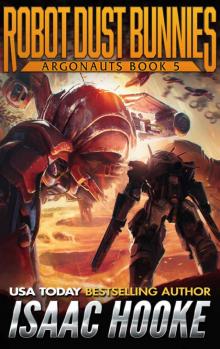 Robot Dust Bunnies (Argonauts Book 5)
Robot Dust Bunnies (Argonauts Book 5) Battle Harem
Battle Harem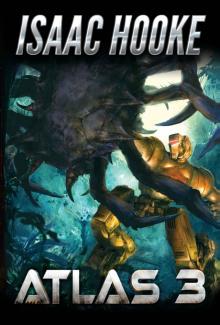 ATLAS 3 (ATLAS Series Book 3)
ATLAS 3 (ATLAS Series Book 3) Argonauts 2: You Are Prey
Argonauts 2: You Are Prey Worlds at War (A Captain's Crucible Book 5)
Worlds at War (A Captain's Crucible Book 5)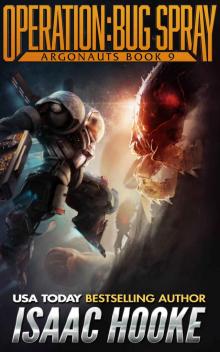 Operation: Bug Spray (Argonauts Book 9)
Operation: Bug Spray (Argonauts Book 9) Battle Harem 2
Battle Harem 2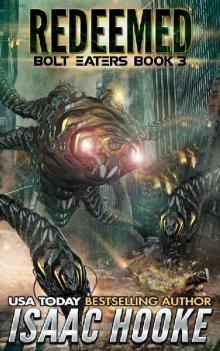 Redeemed (Bolt Eaters Trilogy Book 3)
Redeemed (Bolt Eaters Trilogy Book 3) Atlas
Atlas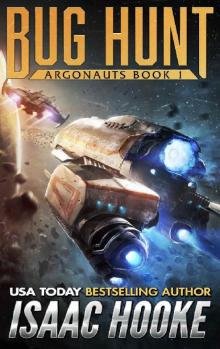 Argonauts 1: Bug Hunt
Argonauts 1: Bug Hunt Reactivated (Bolt Eaters Trilogy Book 1)
Reactivated (Bolt Eaters Trilogy Book 1) Alien War Trilogy 3: Titan
Alien War Trilogy 3: Titan Flagship (A Captain's Crucible #1)
Flagship (A Captain's Crucible #1)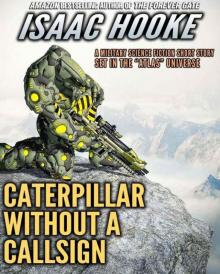 Caterpillar Without A Callsign
Caterpillar Without A Callsign The Forever Gate
The Forever Gate He Who Crosses Death (Star Warrior Quadrilogy Book 3)
He Who Crosses Death (Star Warrior Quadrilogy Book 3) Reforged (Bolt Eaters Trilogy Book 2)
Reforged (Bolt Eaters Trilogy Book 2) Refurbished
Refurbished Reloaded (AI Reborn Trilogy Book 2)
Reloaded (AI Reborn Trilogy Book 2) He Who Crosses Death
He Who Crosses Death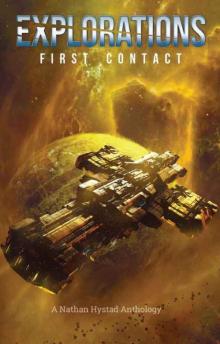 Explorations: First Contact
Explorations: First Contact Planet Killer (A Captain's Crucible Book 4)
Planet Killer (A Captain's Crucible Book 4) Quantum Predation (Argonauts Book 4)
Quantum Predation (Argonauts Book 4) Clandestine-IsaacHooke-FreeFollowup
Clandestine-IsaacHooke-FreeFollowup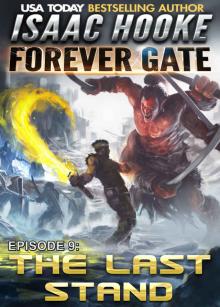 The Last Stand (The Forever Gate Book 9)
The Last Stand (The Forever Gate Book 9)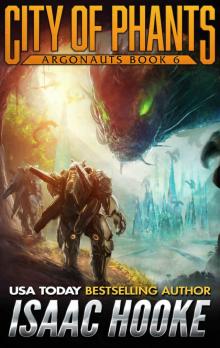 City of Phants (Argonauts Book 6)
City of Phants (Argonauts Book 6) Test of Mettle (A Captain's Crucible Book 2)
Test of Mettle (A Captain's Crucible Book 2) Cradle of War (A Captain's Crucible Book 3)
Cradle of War (A Captain's Crucible Book 3) Rade's Fury (Argonauts Book 7)
Rade's Fury (Argonauts Book 7) Rebirth (The Forever Gate Book 6)
Rebirth (The Forever Gate Book 6) The Forever Gate Compendium Edition
The Forever Gate Compendium Edition Mechs vs. Dinosaurs (Argonauts Book 8)
Mechs vs. Dinosaurs (Argonauts Book 8) Alien War Trilogy 2: Zeus
Alien War Trilogy 2: Zeus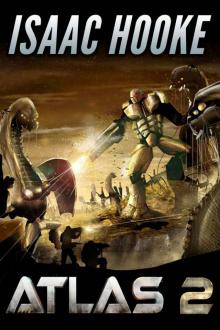 ATLAS 2 (ATLAS Series Book 2)
ATLAS 2 (ATLAS Series Book 2)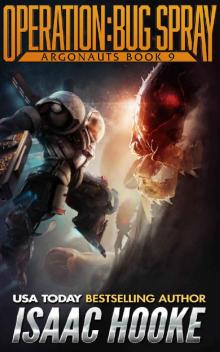 Operation_Bug Spray
Operation_Bug Spray